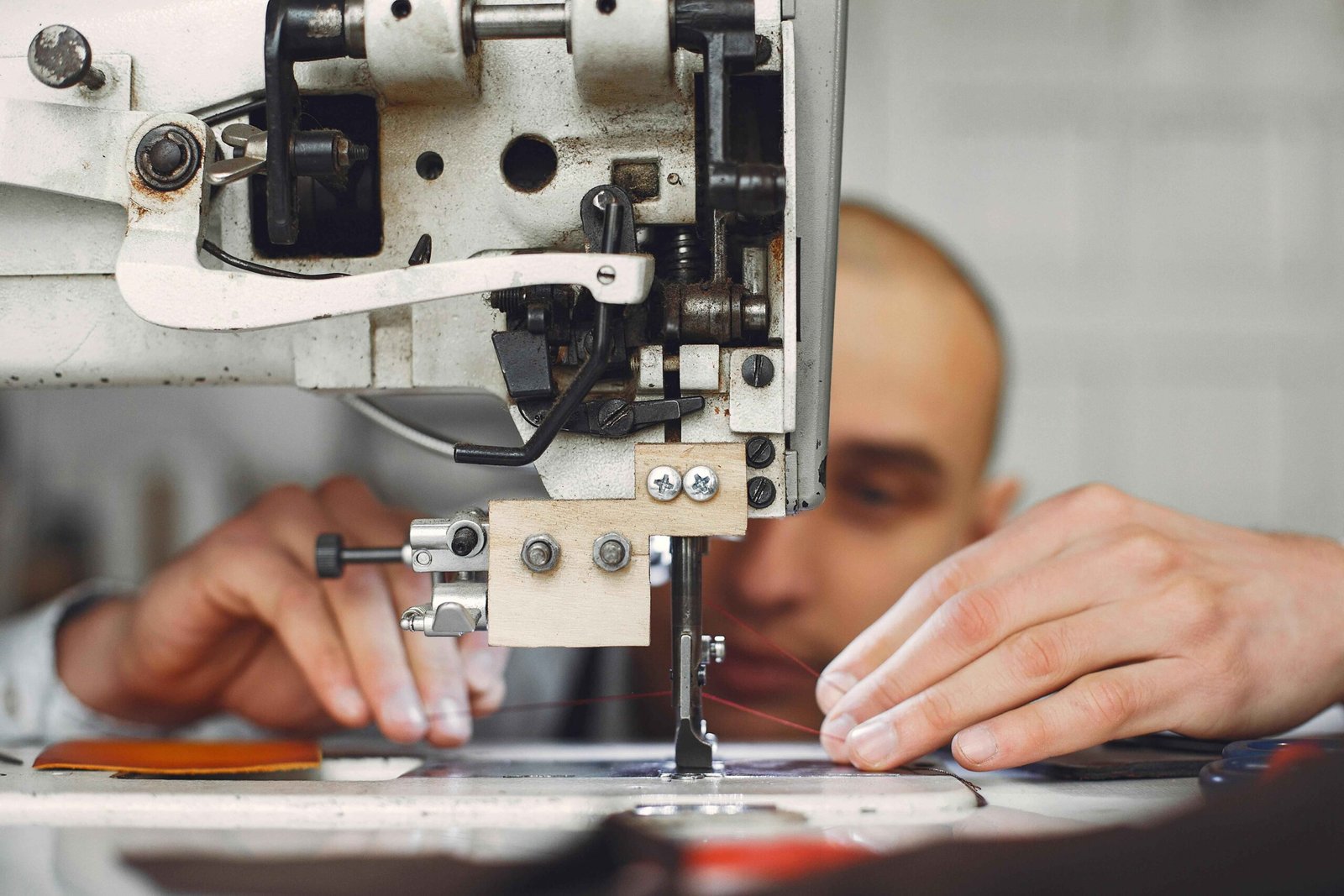Few strategies are quite as potent as limited drops in generating hype, driving demand, and in turn fueling sales in the world of streetwear. From hyped sneaker releases to limited capsule collections, limited drops evoke that feeling of need and hurry, tapping into the psychology of scarcity and exclusivity with an increased interest in buying before things go out of stock. The advantage of limited drops can really be a game-changer for streetwear brands, taking products from must-haves to want-haves and developing real brand loyalty and customer activation.
We shall discuss in this in-depth guide the power of limited drops, why they work, how to implement them well, and what steps to take to increase sales and brand awareness.
1. Why Limited Drops Work: The Psychology of Scarcity
The basis of limited drops is the principle of scarcity, a principle in behavioral psychology that tells us things that are scarce hold a higher value. When an item is only available for a short time or in limited quantities, it’s valued higher. This urgency makes one decide to buy without overthinking anything.
Why limited drops work well in streetwear:
- FOMO (Fear of Missing Out): The limits create FOMO, in which customers fear they will miss something valuable. The element of being part of the latest trend or owning exclusive items is a status symbol in streetwear.
- Scarcity and Exclusivity: This feeling of exclusiveness sometimes comes with limited edition products. When a customer is certain that only a few people will own the thing, that is most certainly going to beget in him or her the feeling of pride of ownership and being unique.
- Hype and Anticipation: Lot of hype and anticipation builds into a drop this time, especially if it is hyped well. The fans wait for the release date, and the frenzy is only seen after the items have been made live.
- Impulse Purchases: Since the availability of the products is limited, it encourages the consumer to take hasty decisions. The fear of missing will make them buy without a second thought altogether, thereby skipping the usual browsing and comparison that is usually associated with regular items.
- How to Structure a Winning Limited Drop
The scarcity model is a strong thing; however, offering fewer products does not necessarily make the limited drop successful. Indeed, with some planning and creativity, your limited drop can succeed much better than ever before-to be as varied as product selection to promotions.
The following are the primary components of structuring a limited drop:
a. Choose the Right Products
Not everything should be included in a limited drop. The things that you place inside your drop should, in themselves, make the customers feel that it is something special, exclusive, or for a certain occasion. You’d want customers to feel that they’re experiencing the exclusivity and worth of a limited availability.
- New or Original Designs: Unique designs that have never been offered. Examples include: t-shirts, hoodies, and sneakers. It could also be a singular collaboration with a different brand or artist.
- Capsule collections: A small, cohesive collection of products released all at once. Often, capsule collections include limited variations of staple items-like tees, jackets, and accessories-all tied together by a common theme or aesthetic.
- Collaborations and Partnerships: Few drops with such a famous designer, artist, or other brand will generate extra hype. Collaborations are super sought after due to this reason alone because they combine both their fanbases and yield really unique creations.
b. Set Clear Time Limits or Stock Numbers
For a limited drop, it is crucial to define the scarcity. This can be done either by putting time constraints on the availability of products or restricting the number of pieces produced.
- Few Pieces or Quantities: You can give exclusivity through the production of certain number of items. For instance, releasing only 500 pairs of sneakers makes them highly coveted, especially among collectors. Once they are sold out, it’s gone.
- 24/48-hour Time-Limited Drops: Another option is to have a strict sales window. A 24-hour sale window or a 48-hour sale window provokes buyers into making the sale within a certain limited window, since they won’t be able to buy the item later.
c. Build hype before the drop
The one thing the limited drop strategy depends on more than anything is hype. Without someone spreading the word about your drop, then the scarcity is irrelevant. What you want to do is create anticipation and hype before the drop date. This way, your customer will be ready to buy the moment that product goes live.
This is how you hype
- Teasers and Sneak Peeks: Tease the drop weeks in advance. Use social media, email newsletters, or even physical advertisements and sneak peeks of the products, but tease one thing at a time instead of letting the cat out of the bag all at once. When suspense builds, interest peaks.
- Countdowns: On your website or social media profiles, count down to the drop. It reminds customers of the urgency and builds anticipation as those hours count down.
- VIP Previews: Provide exclusive previews of the collection to VIP or loyal customers. It will make them feel something special, and they are bound to buy during the drop.
d. Use Influencers and Brand Ambassadors
While influencers stay a crucial part of your limited drop. Team up with the most prominent influencer, streetwear blogger, or brand ambassadors who have an audience within your target segment.
-Influencer Teaser: Get the influencer to wear or talk about your product before the drop and thus generate some anticipatory hype. That exclusive first look or unboxing video on social media creates buzz amongst their fans.
-Live reviews or unboxing: On the day of your drop, have the influencer live review or unbox your products. Real-time excitement might just get them making impulse purchases from their followers.
.
- Your Website and Checkout Process
I imagine it must be very frustrating for you when, in your drop with low stock, websites get crashed or take long to check out, or the whole purchase process is too complicated and your customer abandons the shopping cart. You need a light user friendly experience that can withstand high traffic and allows fast checkouts.
Here’s how to make sure that your website will be prepared for a successful drop
- Scalability: Droplets that attract a high amount of traffic to websites may bring the potential for scale issues, so be sure to ensure your site can handle the influx. Work on strengthening hosting provider optimization for high-traffic periods or use a scalable platform.
- Streamline Checkout: Reduce the number of steps in the checkout process as much as possible. Offer functionalities like guest checkout, saved payment information, and even a one-click payment option (if provided). The fewer steps there are to completing a purchase, the better.
- Mobile-Friendly: There’s a high probability of streetwear buyers checking out using mobiles. So, it should be optimized for viewing on small screens.
- Cart Protection: Anticipate protecting carts from abandonment using elements like cart reservation. When a customer places something in his or her cart, give that customer a short, limited window of time in which to complete the purchase before the item goes back into inventory.
- Create Urgency During the Drop
Even after the drop hits, you should keep up the pressure over the course of the release window. You must make customers believe that the clock is running out or that the things will run out soon.
Here are a couple of ways to keep that urgency going:
- Stock Updates: Show the actual stock status or actual stock numbers, or even use notices like “Only 10 left!” in the product pages. This means the potential buyers will be able to tell how fast the products are being sold and must act quickly to grab one.
-Flash Sales or Surprise drops: You can add extra excitement by introducing flash sales or surprise items for time-limited drops. For example, during the drop, an extra exclusive product comes out three hours later, or a limited-time discount is given to people who purchase in a certain time space. - Social Proof: Illustrates how many people are actually viewing or buying a product at that exact time. This gives a feeling of popularity and creates a sense of FOMO: Fear Of Missing Out.
5. Post-Drop Engagement and Follow-Up
What happens after the drop is just as important as the drop itself. You want to keep your customers engaged, build anticipation for future drops, and make sure that those who missed out stay loyal to your brand.
Here is what to do after the drop:
- Thank Your Customers: Immediately after the drop, thank everyone who participated. You should share the success of the drop on social media—mention that items sold out fast or show off your customers as they receive their products.
- Restock Alerts: Offer the alert of restocking dates or the set of similar products for those who have missed. It gives customers an opportunity to stay interested and hopeful for the next chance.
Sneak peeks of the future drops: Get them excited by little hints of what is yet to come: upcoming collections, limited drops. Keep hanging your customers over the next new thing. - Engage Your Customers Who Have Received Their Items: Ask them to post photos of their purchases on their social media channels using a branded hashtag. By reposting their photos, a community is built around your brand, which will foster loyalty and excitement for future drops.
6. Examples of Successful Limited Drops in Streetwear
Now, many of the best streetwear brands have really perfected this art of the limited drop, which is that they’ve turned them into global events people all wait for. Let’s take a few examples of how iconic streetwear brands create urgency with their limited drops and give sales the boost:
- Supreme: Of course, Supreme is the gold standard of limited drops. Their weekly “Thursday drops” are just part of streetwear culture nowadays. Extremely limited quantities of their collaborations with big brands, like Louis Vuitton or Nike, and even they manage to create a kind of scarcity that causes people to line up out the door, selling out items in seconds.
- Yeezy by Adidas: The sneaker drop for the Yeezy line, led by Kanye West, makes this one of its kind of a cultural moment. For it to generate such high demand and so few quantities, and have them restock strategically, it creates great hype around each drop. The fans would set their alarms just to become the first one in line to buy before they sold out.
- Fear of God: Fear of God’s Essentials lineup is that they master the game of limited drop action. Here, there is only each season’s collection and then it disappears. In doing so, there is this unquenchable demand for a basic T-shirt and sweatpants, for example.
Conclusion
Limited drops make a tremendous difference in streetwear brands to create an urgent want for their sales. Put psychological scarcity into action, build up hype, optimize the purchasing experience, and communicate with your audience after the drop, and you can make your products rare, must-haves. The foundation for each of these drop successes comes in the form of planning, promotion, and execution. Limited drops will fuel short-term sales, but it builds in far greater long-term loyalty toward the brand and respective cultural relevance.
Therefore, whether a small new streetwear brand or a popular existing one, adding limited drops to your strategy is the best approach so far to outperform your competition and keep excitement about your brand for an extended period.


